

PROFILE
DESIGN
QUESTIONS & ANSWERS
extracts from a web-interview with Nico Smeenk
extracts from a web-interview with Nico Smeenk
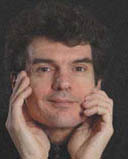
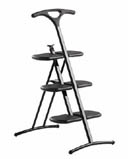
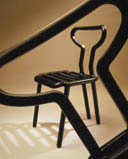
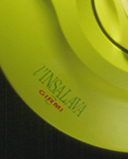
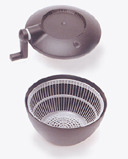
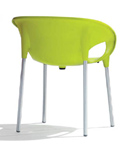
...the human side of things...
In his projects Nico Smeenk moves with agile professionality from the rational methodology of his (Dutch) origins on one side to a passional Italian creativity on the other.
Building on his collaborative experience with protagonists of italian and international design (Andries and Hiroko van Onck, Design Continuum, Luca Meda), in these last years he has worked with his own studio for numerous clients in distinct sectors, from medical devices to kitchen utensils; from furniture to electrodomestic appliances.
Co-designer (with Andries van Onck) of the folding stepladder
'Tiramisł'
for Kartell (selection Compasso d'Oro 1994). His chair 'Track-One' wins the first prize
in the competition 'Design 90'. Two of his electrodomestic appliances are in the
permanent collection of the museum 'Forum
di Omegna', whereas two 'manodomestic' utensils and the chair 'OYYO' took part in the exhibition
'Piemonte
Torino Design' of 2006/08.
He has a preference for projects with a certain level of technological complexity, but the design of his
products always shows a profound interest in the human side of things.
Design researcher ante literam, his aptitude for research and design theory is evident also in his teaching - from 1999 he is lecturer at the 'IED' in Milan. (A.B.)
Design researcher ante literam, his aptitude for research and design theory is evident also in his teaching - from 1999 he is lecturer at the 'IED' in Milan. (A.B.)
What exactly is the job of an industrial designer?
In order to be competitive on today's marketplace, industries have to innovate their products continuously. Creating new products is not easy and often it is risky - it requires significant investments.
My job is to make it less risky. How?
On one side I work as a negotiator between end user and industry: I try to assure that the new product will satisfy the end user from all points of view (including the economic). To achieve this, I observe the end user, interpret marketing requests and propose alternative product concepts.
On the other side I collaborate creatively with the industry to find solutions that imply as little investment as possible - for a product with the optimal quality/cost ratio.
Every designer has a motto - what is yours?
Paraphrasing a statement by a famous architect (Mies van der Rohe), my motto is: "Less slogans, more design".
In other words: there are no stylistic answers 'a priori'. First of all I listen, try to understand all the parties that are interested in the product - the end user before all - and to analyse the context.
The project that follows is the research for a design that responds as well as possible to this analysis. It's the only way for a design to become strategically innovative and not a mere stylistic variation.
What are the main characteristics of your studio?
A design studio is the sinergy of a multitude of factors. I can point out two characteristics that are fundamental, though.
The first: the organization of the studio is lean and efficacious; this compact structure guarantees continuity in the project; directly visible in the quality of the product.
The second is related to the professionality of the studio. In more than 25 years of activity I have acquired a broad general vision on projects: aspects of marketing, technology, production, comunication. This facilitates me in giving a holistic, integrated imprint to the project, involving - where necessary - the specific professionals that are connected to my collaborative network.
In practice, how does the collaboration between designer and industry proceed?
Usually, in order to ensure the engagement of the parties, I divide a project in three phases.
A first creative phase delineates the global objectives; illustrated by the presentation of a good number of alternative design concepts.
In the second phase we 'materialise' the chosen design, with due attention to form-detailing.
The result of the third phase is a complete technical documentation of the design, a good basis to evaluate product realisation, costs/investments and commercial success.
What does 'good design' mean for you?
Good design is interdisciplinary. A good designer combines the skills of a poet, a sculptor, a technician and a marketing manager.
Of course, design products are neither poems nor sculptures, neither inventions nor business: they are industrial products, with concrete forms and functions, bound to be sold.
If a product is well designed, it may have certain "side effects": poetic, communicative etcetera...
Who were your 'design maestro's'?
My father taught me all about bicycle maintenance; a very good starting point for this profession: before all, things should not fall apart.
The collaboration with Andries and Hiroko van Onck has given me a rational approach to explorations in search of the perfect form.
At Design Continuum I understood the importance of good design management.
For a designer, a continuous learning process is part of the job.
What are your design tools?
All kinds of: from my pencil to 3D parametric software.
But most of all: concrete, tangible models; essential in the evaluation of the complex relations between user and product, because that's where the optimal design is drawn from.
Our presentations are always accompanied by models. In the first phase these are volumetric models in polystyrene foam; along the project we refine them into aesthetic models and we often end the project with rapid prototyping.
You're lecturer at the 'Istituto Europeo di Design' in Milan; can you tell something about it?
Sure.
The contact with students is dinamic, stimulating. Their enthusiasm is contagious, their creative freedom compels me to always keep an eye on new technologies and on new didactic / methodologic approaches.
Young designers demand valid guidelines for their work and their research - something that I feel I can offer through my continuing field experience.